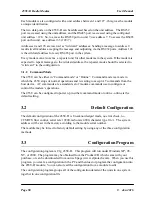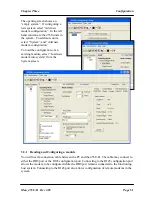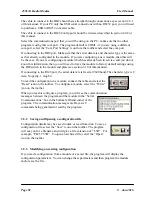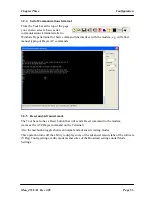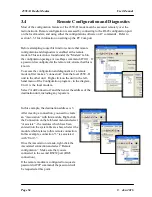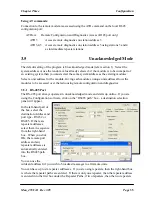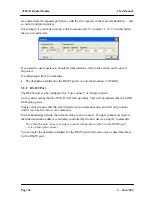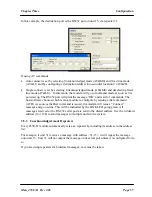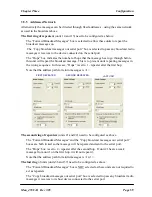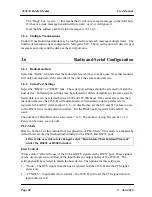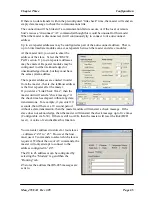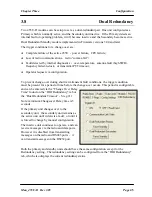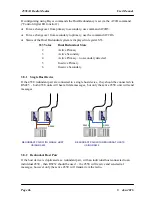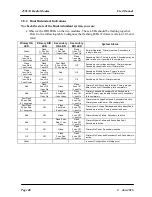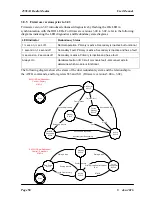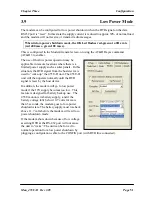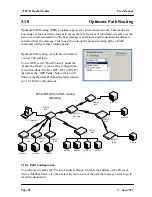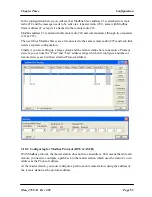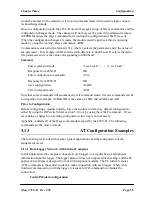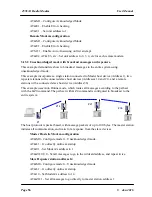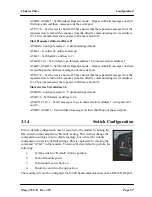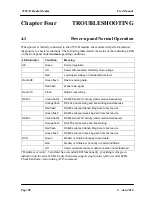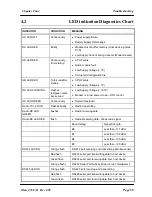
455U-D Radio Modem
User Manual
Page
44
©
Jan 2016
3.7.2 Auto Answer (Auto-Connect Slave)
The only configuration required for an auto-connect slave module is to enter its unit address.
Its address path will be automatically taken
from the Connect message from the master
unit.
If you enter an “Inactivity Timeout” value,
then the 455U-D will automatically reset
the link if there has been no data
transmission within this time. If you use
the link check feature at the master unit,
you should enter an “Inactivity Timeout”
value to reset the link at the slave unit.
It is a good idea to use these timers as it
provides a higher level of security for the Acknowledged mode system. Normally a link check
time will be entered at the master unit (for example, 10 seconds), and an inactivity timeout
will be entered at the slave unit (for example, 15 seconds). It is important that the inactivity
timeout is greater than the link check time.
A value of zero disables these parameters.
3.7.3 Single-Connect Acknowledged mode
Single-connect is similar to a dial-up telephone modem. In this mode, the module will attempt
to connect to a destination address once. A host device will issue a connect “dial” (ATD)
command, and the module will send a connect message to the destination address. If the
destination module responds, then the link is connected and the unit goes online. The DCD
status is set (LINK LED comes on, DCD signal and DIO signal turn on if configured). If the
destination module does not respond, then the initiating modem will re-try (up to the number
configured in S-Register S7). If there is no response, the link is not established and no data can
be transferred. The module will not attempt to reconnect again until it receives another
connect command from its host.
The link is normally disconnected by the host issuing a disconnect or “hang-up ATH
command. In this mode, it is normal for a host to connect and disconnect to several slave
modules using AT commands. A common example is a PC polling several analyzers or
dataloggers. The PC connects to a remote station one at a time, transfers data, disconnects and
connects to the next station.
Up to six repeater addresses may be configured as part of the remote address. That is, up to 6
intermediate modules can act as repeaters between the master and slave modules.
The RS232 DTR signal can be configured to act as a disconnect signal. If so configured
(AT&D), the DTR signal will force a hang-up (DCD reset) if the host device resets the
DTR signal.
In single-connect Acknowledged mode, the host devices use AT commands to select
destination addresses to connect to. Normally only a unit address is required.

